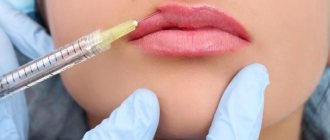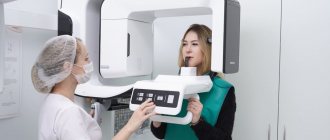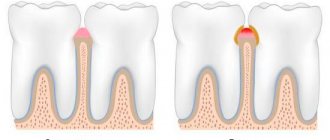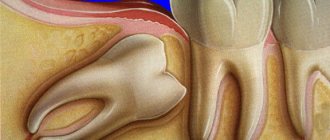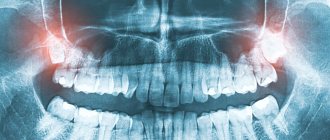Pain that occurs in the organs of vision can vary in intensity and nature . It depends on which tissues are affected by pathological processes.
Often the patient can determine the location of the pain syndrome on his own, and in cases where pain is felt under the upper eyelid , the cause lies in ophthalmological diseases (less often, such a symptom develops with general ailments).
Why does the eye under the lower eyelid hurt?
The causes of pain under the lower eyelid are the same as under the upper , and in most cases it is chalazion and stye .
But with the disease “ endophthalmitis,” the pain syndrome often manifests itself under the lower eyelid. This is a purulent inflammatory lesion that spreads to the vitreous body of the eye and, if left untreated, endophthalmitis leads to loss of vision.
Know! Pain under the lower eyelid in this case can be explained by the fact that this is a pathology of traumatic origin (including it can develop after unsuccessful surgical operations), and sometimes it develops with ulcerations of the cornea.
And in all these cases, the nerve endings are affected, of which there are more in the lower part of the visual organs.
A complete cure for endophthalmitis can only be guaranteed in a hospital setting, so at the first manifestation of symptoms of such a disease (swelling of the eyelids, headaches, the appearance of a white or yellowish stripe at the lower edge of the iris, lacrimation), you should consult a specialist .
Common Causes of Eye Pain
Migraine
Migraine is the most common type of headache that deprives us of the joy of life. This is a headache that comes in hot flashes, can last up to 72 hours, and is often characterized by severe throbbing pain on one side of the head and behind the eyes. Pain may also be felt in the back of the head. Other classic migraine symptoms include nausea, vomiting, and sensitivity to light, smells, and sounds.
“Migraine comes from the term “migraine,” which means “pain in half the head.” People with migraines have a very hard time,” says Green. “This is a severe pain, and it comes in different types, that is, there are several types of headaches. People may feel differently, but they all have migraines.”
Visual disturbances such as flashing lights or halos around light sources may precede headaches. However, most people who suffer from migraines do not have these symptoms.
There are many triggers that can trigger a migraine. These include fatigue, emotional stress, not enough or too much sleep, skipping meals, bright or flickering lights, strong odors, loud noises, certain foods, and changes in temperature and humidity.
There is also a genetic predisposition to migraines: 70% of patients report at least one close relative who also suffered from migraines.
When caught early enough, migraines can be successfully treated with over-the-counter pain medications, but there are several prescription medications that can be used both preventatively and to reduce the number of attacks and pain symptoms.
Chronic migraines and eye pain may require daily medication to treat.
Cluster headaches
Cluster headache is a condition characterized by multiple and frequent attacks of headaches. These cluster periods can last weeks or months, followed by a period of remission where headaches do not occur for several months or years.
Cluster headaches usually occur quickly, sometimes the pain has warning signs, and the pain can last up to three hours. Symptoms include excruciating pain (often a headache behind one eye) that radiates to other parts of the face, head and neck; red and swollen eyes; and excessive tearing.
Cluster headaches are thought to be caused by abnormalities in the hypothalamus (the part of the brain that controls many important body functions). What may be causing the pain has not yet been identified, and there is no cure for cluster headaches in the eyes yet.
Treatment for cluster headaches aims to reduce the severity of symptoms, shorten the period of cluster headaches, and prevent future attacks. Treatment options include oxygen therapy, triptan injections, and local anesthetics.
Sinus infections
The sinuses are the air-filled spaces of the skull. They are located behind the nose, forehead and cheeks, as well as behind the eyes. A sinus infection (sinusitis) is a common cause of pain, including headaches, in the eyes.
Migraines are often mistaken for sinus infection headaches. Treatment for headaches localized to the sinuses involves treating the underlying infection with prescription antibiotics and decongestants.
Ophthalmic diseases causing headaches localized behind the eyes
Finally, there are a number of eye diseases and other problems that can cause eye pain. Among them:
Glaucoma
Glaucoma is an eye disease that affects the optic nerve, causing loss of peripheral vision, blurred vision, difficulty adjusting to darkness, and halos around light sources.
A special type of glaucoma, acute angle-closure glaucoma, can cause nausea and severe headaches behind the eyes. If you experience these symptoms, you should contact your eye doctor immediately.
Scleritis
Scleritis is severe inflammation of the sclera, or outer covering of the eyeball. It is most often caused by autoimmune diseases. Symptoms include a headache behind the eye, red or pink eyes, watery and blurred vision, and light sensitivity.
Optic neuritis
Optic neuritis, or inflammation of the optic nerve, is accompanied by eye pain or headache behind the eye, blurred vision, loss of color vision, floaters, nausea, and loss of vision.
Graves' disease or Graves' disease
Graves' disease is an autoimmune disease associated with problems with the thyroid gland. Basedow's disease affects the eyes, they become very bulging, reddened, the eyelids retract, patients have limited ability to move the eyes, the image is double, and sometimes there may be loss of vision. In some cases, Graves' disease can also cause eye pain.
Treatment options
Elimination of pain under the upper eyelid require symptomatic therapy, but complete treatment of the underlying disease , therefore, after examination by an ophthalmologist, additional diagnostic measures are possible from other specialists.
In cases where the cause of pain is a foreign body getting under the eyelid , you can cope with the problem yourself if you follow this simple algorithm:
- A clean scarf or napkin is folded into a triangle to form a sharp edge. After which, with this sharp edge, the foreign object is gently pushed towards the inner corner of the eye (if the object has not dug into the conjunctiva to a great depth, it can be immediately picked up with the corner of a napkin);
- when the speck reaches the corner of the eye, you can remove it from there with a cotton swab ;
- After the procedure, antibacterial drops can be dropped into the eye .
At home, you can take emergency measures for chemical burns.
Prevention methods
Most diseases that manifest as pain in the head and bridge of the nose can be prevented. They are not associated with anatomical features and can appear at any age, often associated with a seasonal decrease in immune defense. Doctors at the Clinical Institute of the Brain recommend following simple rules that will allow you to maintain health in any conditions:
- protect the bridge of the nose from hypothermia, especially in windy weather;
- during active sports, wear protective equipment that will protect against head and nose injuries;
- choose the right diet, with an optimal balance of vitamins and microelements;
- observe the rules of personal protection and hygiene in order to prevent the spread of viral diseases;
- minimize contact with allergens;
- start treatment at the first symptoms of a cold and do not wait for it to enter the acute stage.
Pain in the head and bridge of the nose can accompany various diseases of an inflammatory, traumatic, or infectious nature. In the early stages, they are easily treatable and do not pose a health risk, but can progress over time. At the Clinical Brain Institute, the patient will receive an individual diagnostic program that will help determine the exact cause of poor health. Experienced doctors will select a simple but effective treatment regimen, thanks to which you can quickly return to your normal lifestyle.
Prevention
Prevention involves compliance with hygiene standards , which will eliminate the risk of infections in the eyes.
It is necessary to keep your hands clean (especially after going outside or visiting public places), but even with clean hands you should not rub your eyes too much.
You should also follow a sleep schedule, avoid getting too cold, and include more healthy foods in your diet (including fruits and vegetables).
This is necessary to maintain immunity at a high level and will avoid the development of diseases even when pathogenic microflora enters the body.
What is sinusitis?
Sinusitis refers to inflammatory diseases of the paranasal sinuses (sinusitis).
Attention! In this case, the sinuses, located on both sides of the nose in the bones of the upper jaw, become inflamed. These maxillary sinuses become inflamed equally often in children and adults.
The main purpose of such cavities is to equalize pressure in the external environment and intracranial bones. Such processes occur due to communication between the cavities and the nose through narrow openings.
If inflammatory processes develop, these sinuses become blocked and phlegm and mucus begin to accumulate in them .
In it, when the disease is of infectious origin, pathogenic microflora develops, which aggravates the symptoms.
Swelling of the face in the eye area in this case is due to the fact that the inflamed sinuses are located close to such areas, and with an increase in the size of the inflamed tissues, this manifests itself visually.
In this case, sinusitis can be one-sided or affect both sinuses, and in the first case, swelling of the eye and face occurs only on the side of the inflamed eye.
Diagnostics
Severe pain in the eye leads to blepharospasm, which makes ophthalmological examination difficult. To alleviate the patient's condition, instillation of analgesics is recommended, after which diagnosis begins. It is important to assess the condition of the eyelids, the shape of the palpebral fissure and the position of the eyes. The following are specific studies:
- Visometry.
Visual acuity is determined at the beginning of the examination of the patient. In the absence of object vision, it is necessary to study light projection. Visometry is performed with and without distance correction. - Non-contact tonometry.
Penetrating eye injuries are often accompanied by hypotension. With iridocyclitis, intraocular pressure increases. It is important to compare the IOP in both eyes and also measure the central corneal thickness. - Biomicroscopy of the eye.
First, a detailed examination of the anterior segment of the eyeball is carried out with mandatory eversion of the upper eyelid. Next, fluorescein staining and examination with a cobalt filter are performed, which allows visualization of small erosive defects. - Ophthalmoscopy.
Fundus examination is carried out after cycloplegia, if intraocular pressure is compensated. The ophthalmologist evaluates the transparency of the optical media and the condition of the retina down to the dentate line. - Ultrasound of the eye.
Ultrasound examination is used when there are difficulties in visualizing the structures of the eyeball due to miosis, corneal edema, hyphema or hemophthalmos. The advantage of this method is the ability to detect x-ray negative foreign bodies. - Radiography.
It is performed in case of severe injuries in order to prevent damage to the bone walls of the orbit. The special Komberg-Baltin prosthesis makes it possible to determine the location of intraocular radiopaque foreign bodies.
Eye examination by an ophthalmologist
Carrying out diagnostics
When the bone under your eye hurts, you shouldn’t hesitate. In case of alarming symptoms, the patient should definitely contact a therapist or otolaryngologist. The specialist will certainly give a direction to do a nasal culture. In addition, certain studies are shown:
- Performing endoscopy of the paranasal sinus.
- Performing ultrasound diagnostics.
- Taking x-rays of the lateral and frontal areas of the face.
- Performing computed tomography.
- Carrying out magnetic resonance imaging.
Only immediately after receiving the result can the doctor understand why the bone under the eye hurts.
Causes and symptoms
Pain can be caused by various reasons, which are characterized by certain symptoms:
- Osteomyelitis (according to ICD 10, M86). It is a consequence of advanced dental disease. This is, first of all, inflammation of the bone, which gives a high temperature. Osteomyelitis (according to ICD 10, M86) can spread to absolutely all elements of hard tissue, as well as to spongy and compact substance and even to the periosteum.
- Mechanical injury. It may be associated with bruises or a fracture of the facial bone. Upon palpation, a person feels severe pain. The site of injury becomes blue and swells.
- Neuralgia, which affects the nerves located in the facial area. We are talking about the trigeminal, glossopharyngeal, facial and hypoglossal nerves. A person’s facial expressions may be disturbed, facial asymmetry may arise, and, in addition, the bone on the cheek under the eye may hurt. Shooting along with twitching usually accompany trigeminal neuralgia. It can shoot at the neck, ears, shoulders and temples.
- Vascular eye disorder. It causes sharp pain around the eye sockets, pain and tearing are also possible. Weak and, in addition, damaged vessels supply blood to the eye area very poorly, which is why similar symptoms appear.
